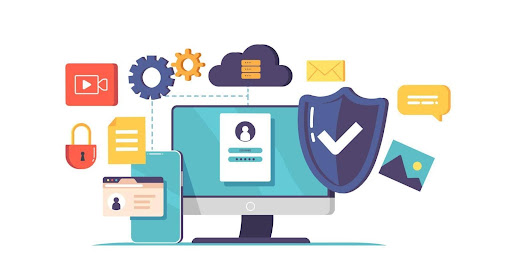The long arm of technology has continued to touch every aspect of bought. In the business world, the integration of technology into various processes has brought about flexibility, mobility, and automation. Additionally, it has also opened up various opportunities and led to the emergence of new-age concepts like e-commerce.
Forward-thinking retailers are heavily investing in digital solutions to give their customers the appropriate e-commerce channels and platforms to purchase from. This is because contemporary customers prefer to make online purchases as opposed to visiting a brick and mortar shop. Online shopping craze is largely driven by the increased penetration of internet services around the world and the availability of cheap internet-enabled phones and devices.
In the last decade or so, the global e-commerce ecosystem has continued to see consistent growth. For instance, the e-commerce industry was estimated to be worth $2.3 trillion in 2017 with the amount expected to hit $4.5 trillion marks by 2021. In the United States alone, 10% of all retail sales in the country are conducted through e-commerce shops and platforms.
So does the proliferation of web-based retailers mean that the retail sector is limping to the grave?
In this article, we are going to look at the categories of e-commerce, how Bespoke software development has influenced the e-commerce industry, and the opportunities that have come with e-commerce software development.
Table of Contents
What is Bespoke Software Development?
Simply put, Bespoke software development is the creation of customized applications or other software solutions. Unlike using an off-the-shelf product, business owners opt for bespoke solutions that are perfectly suited for their business model and customer profiles. In terms of development, these tailor-made solutions can be developed by either an in-house team or hiring a Bespoke software development company.
Despite an average person using mobile devices for at least 6 hours per day, only 2.86% of this online traffic and e-commerce website visitors convert into actual purchasers. As such, business owners are looking to customize and expand the scope of their e-commerce applications in order to convert casual visitors into raving customers.
Before we look at the benefits that software development provides, let’s look at the classification of e-Commerce.
Classification of e-Commerce
e-Commerce can be categorized into 5 main categories:
Business-to-consumer (B2C)
B2C e-Commerce largely covers the retail part of the online aspect of a business. It entails directly selling products, services or information to the consumers. As of 2019, there are innumerable virtual malls and stores on the internet vending all manner of consumer goods. One of the most dominant B2C platforms is Amazon.
Consumer-to-consumer (C2C)
C2C e-commerce entails general consumers trading goods, services or information amongst each other online. These types of transactions are mainly conducted through platforms provided by third parties. A good example of C2C e-Commerce is online auctions.
Consumer-to-business (C2B)
C2B is the exact opposite of the B2C model as it entails consumers availing their products and services online where companies can bid and purchase them. A good example of C2B is iStock where individuals can sell royalty-free photographs and images.
Business-to-administration (B2A)
Business-to-administration refers to an e-Commerce model whereby transactions are conducted on an online platform between a company and government bodies or public administration. On a daily basis, government branches depend on e-services, especially in terms of registers, social security, legal documents, and fiscals. On a B2A model, businesses are able to supply such services electronically.
Consumer-to-administration (C2A)
These are online transactions conducted between an individual consumer/s and government bodies or public administration. We all know that governments rarely procure products or services from individual citizens. However, they can use electronic platforms to get access to these government businesses all thanks to C2A e-Commerce.
Businesses and their Increasing Dependency on Software
According to recent research conducted by KPMG, 65% of customers interviewed indicated that they conduct price comparisons on their phones before purchasing anything online. On the other hand, 48% of business owners indicated that having an e-Commerce platform for their businesses is super-important to them.
Unlike the contemporary websites which are majorly used to obtain customer’s information, e-commerce platforms allow business owners to sell products and conduct transactions online. Therefore, hiring professional developers to develop a Bespoke application, software, or an e-commerce website is super-important. Even so, there are some co-sell solutions that are ready-made for business partners looking to integrate in the cloud.
Types of e-Commerce Software?
There are major general classifications of e-commerce software. And their classification is largely attributed to their respective deployment methods.
On-Premise. Basically, this type of software is often installed on a local computer or server and managed on-site. All the updates, troubleshooting, and fixing are all done manually by a team of dedicated developers mainly on-site.
Software as a Service. Also referred to as hosted solutions, SaaS is hands-off solutions whose updates, patches, and other technical aspects are handled automatically or with a simple click integration. And with the advancement within the e-Commerce space, SaaS solutions have continued to see major improvements that allow flexibility and wide customization.
Whereas both the On-Premise and SaaS e-commerce software solutions are capable of handling most tasks in a business environment, it’s also possible to integrate them with other services and apps to do even more.
Here is why your e-Commerce opportunities largely depend on software.
Managing Customers and Orders
In Bespoke app software development, business owners are able to get customized yet robust software coupled with powerful features, integration capability, and functionality. With all these attributes, it becomes easy to manage and track customer orders throughout the entire purchase cycle until it’s delivered to the customer. Additionally, when integrated with other third-party apps or services, e-commerce software can handle all the payment processing, curate the transaction records, manage customer’s information, undertake accurate accounting, create bills and invoices, and provide analytics, among others.
Software Shortens the Selling Cycle
The selling cycle begins immediately when your salesperson makes the initial contact with a prospective customer and ends when the prospect decided to make a purchase decision. As a business, ensuring that the sales cycle is expedited without infringing on the possibility of building a strong rapport is critical.
An e-Commerce software features multiple installable features that can be installed with a simple mouse-click. As a result, the day-to-day back office management duties are taken care of allowing you to focus on the saleable aspects of your online store instead of the administrative functions.
Easy e-Commerce Site Setup
Most e-commerce software can help you easily set up and deploy your online store within minutes thanks to the pre-built templates featuring an assortment of themes. With a simple drag-and-drop function, you can configure your eCommerce store. Whether it’s the home page design, adding product details, or checking out security, these builders reduce the TAT of building your store allowing you to focus on other important matters like closing sales.
24/7 Operation
One of the biggest benefits of using e-commerce software is the fact that you are not time-bound. Your business operations are not affected by the staff’s working schedule and customers can make purchases irrespective of the time. And since all the sales aspects are automated, you don’t need to continually monitor what is going on behind the scenes. This brings efficiency in the business operations which is key to improving the bottom line of any business.
Easy Payment Solutions
Nothing comes close to the convenience offered by e-payment solutions. Armed with a powerful payment and shipping tool, your customers are able to pay for goods and services at any time without spending time in a waiting line. Moreover, the risk associated with handling liquid cash is eliminated.
Built-in Marketing and Shopping Features
Another area that software development can help e-Commerce is to leverage the power of online marketing. Most e-Commerce software gives business owners direct access to powerful Internet marketing tools loaded with SEO features. This is particularly important in helping their stores rank higher in the search engine results, at the same time attract new prospects through organic traffic with minimum efforts.
And with the growing influence of AI and machine learning in bespoke software development projects, business owners are starting to see the integration of analytics and statistical tools on eCommerce platforms. These tools help in analyzing real-time data which is key in making better business decisions such as setting dynamic pricing rules, offering coupon codes, and managing affiliate programs.
Help and Support Services
Customer delight and satisfaction are the pillars of any successful online business. E-commerce software allows you as the business owner to close the stable door before the horse bolts out. Whether it is a live chat, video tutorials, live webinar, or direct technical support, e-commerce platforms will help customers benefit from these services. And they’re absolutely free!
No Shipping Worries
Having the right shipping strategy for your customers is critical in increasing revenue and reducing cart abandonment. e-Commerce software acts as a project management software by allowing you to filter supply zones by country and profile the services carrier you want to partner with from a host of payment management solutions. This allows you to align your logistics and pick the right partners to help you reach out to your customers in real-time. Aside from the software, a lot of startup and established Ecommerce companies also rely on 3pl services for their order fulfillment process – from warehousing, picking and packing, to shipping and returns. Take time to learn more about the 3PL process to see if it’s right for your business operations.
Final Thoughts
Throughout human history, very few innovations have managed to spawn as many potential benefits as e-Commerce has. The very global nature of this technology, cost savings opportunity, ability to reach millions of people, and the growth of the web which is the supporting infrastructure of e-Commerce has resulted in many potential benefits to individuals, businesses, and society at large. Although some of these benefits are in their infant stages, their impact will be felt as the e-Commerce ecosystem continue to expand and more bespoke software development projects begin to materialize. And with the increasing acceptance of IT outsourcing, businesses shouldn’t have a problem in getting skilled professionals to help build intuitive e-Commerce software and platforms.
A business website serves as a storefront as it is often the first point of contact with the customers. For this reason, laxity against external security threats can compromise critical business relations.
World over, governments have enacted strict anti-data theft laws to deter hackers. Unfortunately, the number of data breach instances continues to rise.
The spiking number of external website security threats should be unsettling for everyone. This is because even the slightest security breaches could affect a customer’s trust, even if the consequences aren’t dire.
In this article, we are going to look at what constitutes website security. We are also going to probe into why you need to secure your website, and tips to deter hackers.
We will wind up by looking at how a Symphony development dedicated team can help secure your website.
What is Website Security?
Website security is an action plan intended to prevent unauthorized website access.
When it comes to website security…
85% of customers would never deal with a website that sends their data to an unsecured connection.
Even worse…
82% of them would never risk browsing on an unsecured website.
Despite these worrying statistics, website security is still seen as a supplementary issue. A recent report by RBS shows that more than 3,800 breaches have occurred in 2019 alone. As a result, more than 4 billion records have been exposed to cyber-criminals.
But that’s no shocking part…
Out of the over 4 billion exposed records, 3.2 billion were as a result of 8 data breaches. So you should make your online presence more secretive.
Website protection helps protect your website from the following:
DDoS attacks. This is a malicious attack that disrupts the normal operations of a website. It does this by overwhelming the website’s surrounding infrastructure with unnecessary internet traffic.
Malware. Used to distribute spam, steal sensitive information, and take control of a website.
Blacklisting. This entails the unauthorized removal of a website from the search engine results. It may also include flagging it with warnings hence turning the visitors away.
Defacement. Replaces the website content with malicious content.
Vulnerability exploits. Entails exploiting loopholes in a website like old plugins to subjugate a website.
Generally, hacking is facilitated by automated scripts by exploiting website security loopholes.
To stay safe, we have compiled 12 tips to help keep your website safe online.
12 Tips to Avoid Getting your Website Hacked
Regularly Update your Software
This may seem like an obvious suggestion, but it is paramount in securing your website.
Software owners routinely release software patches and security updates to seal security vulnerabilities.
Once you receive update notifications prompting you to update, ensure you comply immediately.
Use HTTPS
Always look out for https and green lock images in your browser bar. This is especially the case every time you give out sensitive information.
Https and green lock images will help signal whether a particular web page is safe or not.
SSL certificates facilitate the secure transfer of sensitive information between the server and the website.
Recently, Google Chrome deployed a security update capable of detecting SSL certificate installation.
Once the software detects missing SSL certificates, it will immediately alert the visitors. Consequently, your web visitors will always bounce even when not giving sensitive information.
Look-Out for SQL Injection
SQL Injection uses a URL parameter to make changes in your database. As a result, hackers are able to gain unauthorized website access and even make changes.
Using the standard Transact SQL exposes your website to SQL Injection attacks. This is because they make it easy to inject rogue codes into your website’s query.
To avoid SQL Injection, use parameterized queries as they are simple to implement. Needless to say, parameterized queries are used in many web languages.
Invest in Automatic Backups
The ever-evolving nature of cyber-attacks means that no website is 100% safe. The last thing you want is to lose everything on your site because you forgot to back it up. For this reason, you need to always have an updated backup version of your website.
Although losing data is stressful, having an up-to-date backup makes recovery easier.
If you have issues manually backing up your data, you can invest in an automatic backup tool.
Install a Web Application Firewall (WAF)
Another effective way of deterring hackers is to install a web application firewall. WAFs are deployed in front of the server to monitor web traffic and block all hacking attempts.
Most modern web application firewalls are cloud-based and come as plug-and-play services.
Step Up your Access Control
We are always inclined to go with uniform passwords that are easy to remember. Hackers being human beings are also aware of this weakness and they tend to exploit it. As a website owner, create secure passwords to prevent unauthorized login attempts.
Alternatively, you can use password generators to create unique and secure passwords.
Hide Admin Pages
Veiling the admin pages from search engines indexing using Robots_txt file helps secure your website. This is particularly important as it makes it harder for hackers to find the pages.
Limiting login access to specific IP addresses also creates an extra security layer. And one of the best ways to do that is to use ASP.NET.
Limit File Uploads
File upload on a website is a common occurrence. Customers use this functionality to upload images or any other documents. With that said, the security implications of hosting an upload facility are quite significant.
No matter how thorough your systems are, malicious bugs can still sneak in. To avoid this, always store the uploaded files outside the webroot directory. Additionally, always use a script while accessing such files when necessary.
Probe your Email Transmission Ports
One of the prime loopholes that attackers exploit to hack a website is not the website itself. Instead, they use your email ports to springboard them into the website.
As such, it’s important to secure your email transmissions. For this, you need to go to the email settings and check the ports through which you are communicating with.
If you are transmitting through the POP3 Port 110, IMAP Port 143, or SMTP Port 25 ports, chances are high that your email transmissions aren’t secure. On the other hand, the IMAP Port 993, SMTP Port 465, and POP3 Port 995 are secure as they are encrypted.
Protect against XSS Attacks
An XSS attack occurs when a malicious script is injected into a benign and trusted website.
This malicious script runs on the client-side by manipulating content and stealing information. The stolen information is then remitted back to the attacker who may use it for harmful purposes.
There are many ways to avoid XSS attacks like validating all the external inputs. You can also prevent XSS vulnerabilities via user input escape. This involves collecting and authenticating data safety before rendering it to the end-user.
Simplify your Error Messages
Errors are a big turn-off to website users and can often lead to high bounce rates. However, you ought to strike a balance between the information to give out and what to withhold. Nowhere else does the saying “hit where it hurts most” fit other than in drafting an error message.
Leaking out all your secrets leaves you exposed to attacks. To avoid this, provide minimal error prompts without disclosing the exception details.
Install Website Vulnerability Scanners
If you can’t identify where technical weaknesses in your website lie, it can be hard to remedy the situation. One of the best ways to counter this is by investing in website vulnerability scanners.
These scanners crawl through the web pages, identify vulnerabilities, and prescribe appropriate remedies.
Role of Symfony Development in Website Security
Symphony is one of the most popular open-source PHP frameworks with MVC architecture. Key highlights of Symphony include dynamic serialization, API token security, and CSRF protection.
It shouldn’t come as a surprise that it’s widely used by most remote development teams to build high-performance websites.
The timely upgrades also ensure that your website is continuously protected against vulnerabilities.
Final Thoughts
As you can see, website security touches a wide spectrum of areas. As a business owner, it’s important to keep your website secure. Treat it the same way you would treat a brick and mortar establishment by employing a security guard. In a brick and mortar establishment, break-ins may never happen at all, but it doesn’t cost you to stay prepared.
With the above tips on how to secure a website, you shouldn’t run short of ideas on where to start. If you aren’t tech-savvy, hiring a team through IT outsourcing is probably a good idea.





